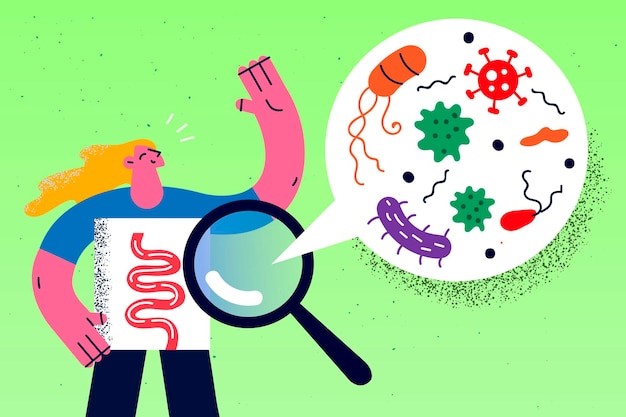
The Gut Microbiome
What is the gut microbiome?
The term Gut Microbiome is being used more frequently in health and nutrition circles but what does it mean, and should I be concerned about it? The Gut Microbiome is the collection of organisms that inhabit the human digestive tract and can include bacteria, archaea, fungi and viruses.
What are the benefits of having a healthy gut microbiome?
A healthy gut microbiome has been linked with a wide range of health benefits and can positively support mental health, weight management, insulin sensitivity, blood lipid levels, fitness, inflammation, the immune system (70% of our immune cells live along the gut), healthy skin, as well as general gut health and functionality (digestion and the absorption of nutrients). We are only just starting to understand the breadth of benefits of a healthy gut microbiome and there is much we are still to uncover about this incredible system.
What does a healthy gut microbiome look like?
Your gut microbiome is as unique as your fingerprint, so it looks different from person to person. In a nutshell, diversity is the key. Studies have shown that the most health benefits come from a gut microbiome that has a high level of diversity of microbes because each type of microbe has a unique function and role within the gut. Think of the gut microbiome as a team; teams are more effective when they have a balance of skills and are not dominated by one type of member.
How can I get a healthy gut microbiome?
For our gut microbes to thrive, we need to feed them, and we can do this by eating a diet rich in a wide variety of plant-based foods. Plant-based foods are foods such as wholegrains (grainy breads, high-fibre cereals, oats), legumes (beans, peas and lentils), fruits and vegetables. Another food group beneficial to our gut microbiome are fermented foods such as yoghurt, kefir, miso, tempeh, pickles and sourdough breads. All these foods are collectively known as pre-biotic foods.
The fibres in pre-biotic foods are those that our microbes like to ferment. However, just like us, our gut microbes can be quite fussy about the foods they like so if we eat a wide variety of pre-biotic foods, there is more chance of feeding and nourishing a wide variety of microbes.
How can a dietitian help you achieve a healthy gut microbiome?
Studies have shown that when pre-biotic foods in the diet are increased, positive changes in the gut microbiome can happen in just a matter of days. However, health data has shown that most people in Australia don’t eat enough pre-biotic foods. Current thinking is that if you aim to consume 30 different plant-based foods per week, you are well on your way to a healthy gut microbiome. However, the western diet preferred by the majority of Australians lacks the recommended levels of fruits, vegetables, wholegrain cereals, legumes, nuts and seeds, whilst being high in ultra-processed, low fibre foods.
So, it sounds easy to improve our gut microbiome, we just increase our pre-biotic foods! Whilst this is correct in theory, healthy eating behaviours need to be lifelong to sustain the positive changes in the gut and this is where many people struggle because there are multiple reasons why we can’t sustain a heathy eating pattern (being time poor, having to feed other fussy eaters in the family, medical conditions, food preferences, food intolerances and the list goes on).
Luckily, the role of a Dietitian isn’t just to advise on what to eat but to help you to sustain those healthy eating behaviours in the long term. So, if you would like to make some lifelong changes to your diet to improve your gut health, but don’t know where to start, or have already tried and been unsuccessful, come and see me; Emma Sanders at Integrative Health Solutions.
You can make an appointment either online or by calling our friendly reception staff on (08) 7231 1628.






